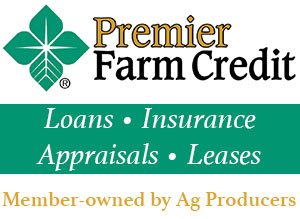Extension Spotlight
Beef breeding season preparation
April 28, 2021
As calving season ends, producers roll into preparing for breeding season of the cow herd. A few things to keep in mind can help make breeding season more successful.
Choose your breeding program
There are multiple options for breeding season. Producers should consider which one fits their operation both financially and with time available. Many producers prefer using natural service. It is the least use of labor and handling of cattle through the chute. Estrus synchronization gives producers the opportunity to use natural service, artificial insemination or a combination of both but requires more labor and handling of females through the chute. An AI only breeding program requires more labor and trips through the chute but can prove advantageous using superior quality bulls.
Check your calendar
The average gestation for beef cattle is 283 day and can range from as few as 279 to as many as 287 days. Planning your breeding season to meet a specific calving season is key. A planned calving season gives two main advantages. First, time calving season when the nutritional plane of pastures is on the rise to match your cows increasing nutritional needs. Second, planning gets the age and sizes of calves you would like to send to market. Planning of breeding season can allow a producer to modify calving season in many ways. It can be moved on the calendar back and to a degree, forward if it allows for adequate time of estrus to begin post calving. Calving season can also be shortened. This gives an advantage by producing a more uniform set of calves to market.
Do not forget to separate replacement heifers and first calf cows on the calendar. Giving heifers and first calf cows an estrus cycle head start breeding, depending on breeding system used, can pay dividends the following year when it comes time to breed again.
Breeding soundness of bulls and cows
No matter which breeding program a producer uses, the services of a bulls will be required for the primary or cleanup breeding of cows and heifers. Understanding the condition and soundness of your bulls is imperative. Are bulls up to date on vaccinations? What are their body condition score? How are their feet and legs? Have bulls had breeding soundness exams with your veterinarian? A producer who can answer all these questions without a negative response has bulls ready for breeding season.
Cows too need evaluated prior to breeding season. Culling decision should be made before investing in breeding cows who may be leaving the herd. Culling decisions may be based on a variety of factors including, but not limited to age, body condition, dentition (condition of teeth), udder quality, ease of calving, previous calf quality, lameness or injury.
Check equipment and supplies
Breeding season can require very few or several supplies depending on which breeding program is being used. A natural service program might only require a truck and trailer in good condition to haul bulls to pasture. More intensive programs require repairs and maintenance of facilities and equipment, ordering ES and AI supplies, as well as organizing labor for handling and breeding of cattle.
Like any situation in production agriculture, planning and preparation lead to more successful outcomes. Understanding where you are, what needs to be done and the desired end result can help focus efforts for a successful breeding season.








Reader Comments(0)